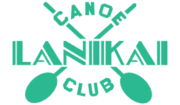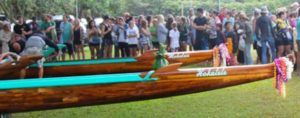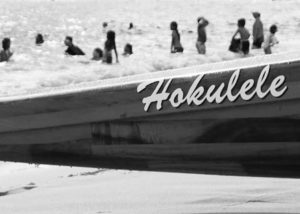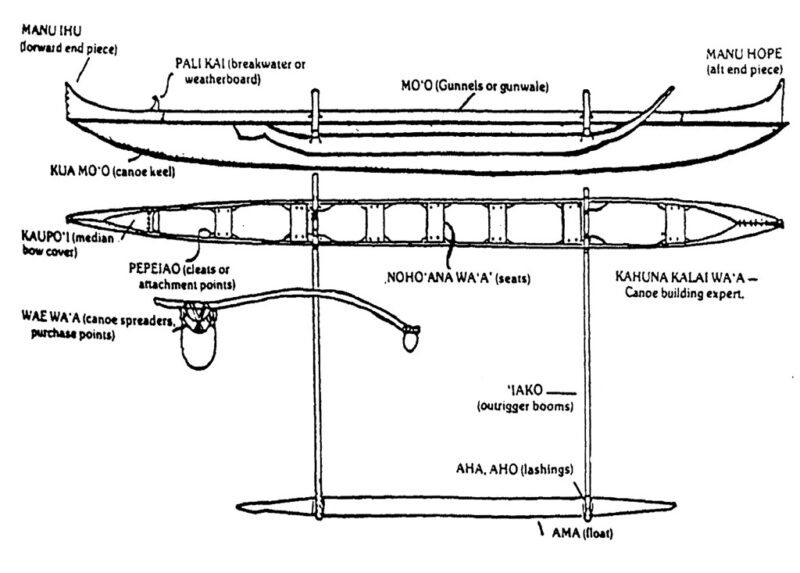The outrigger canoe has been central to the development of Hawaiian culture. So important was the canoe that the building of a new canoe was a significant event involving most of the members of a village: priests, craftsmen, laborers, helpers. From choosing the right tree to launching the new canoe, each step in the process had to be done correctly with the proper ritual and respect to preserve the life of the tree in the canoe and create a canoe that would, in turn, sustain the lives of those who used it.
In Hawaiian tradition each canoe is a living entity, with its own spiritual power or mana. We entrust our lives to our canoes and we treat them with respect.
The open-ocean conditions surrounding our islands led to the development of an outrigger canoe different from those of other Pacific islanders. The Hawaiian outrigger is relatively unadorned, with fore and aft hull covers (kupe) and a splashguard (pale kai) to cope with ocean waves and chop.
Although outriggers now are raced throughout Polynesia, outrigger canoe racing, ancient and modern, seems to have originated in Hawai‘i. There are records of ancient Hawaiians racing for fun and for wagers, sometimes including life.
Today’s HCRA-approved racing canoes are standardized in length and weight to allow both an observance of tradition and a level playing field. To race in HCRA-sanctioned events, including events sanctioned by our association, Oahu Hawaiian Canoe Racing Association, canoes must weigh a minimum of 400 pounds without ‘iako, ama, or seat covers, and can be no longer than 45 feet. While most associations in the Islands, including ours, allow clubs to race fiberglass canoes, at the annual Hawai‘i state championship regatta all crews must race in koa canoes.


 Brent Bixler in collaboration with Allan Dowsett, Kalani Irvine, John Foti and others. She now has a unique ama and back manu hope, which reflects the fishing canoe heritage as Brent carved a fishhook into the manu.
Brent Bixler in collaboration with Allan Dowsett, Kalani Irvine, John Foti and others. She now has a unique ama and back manu hope, which reflects the fishing canoe heritage as Brent carved a fishhook into the manu.